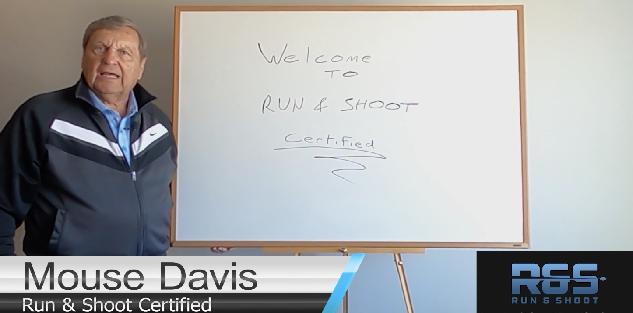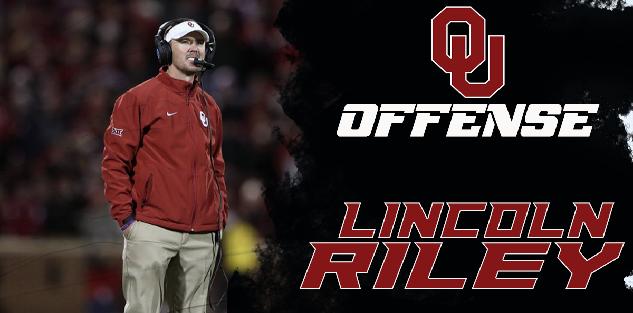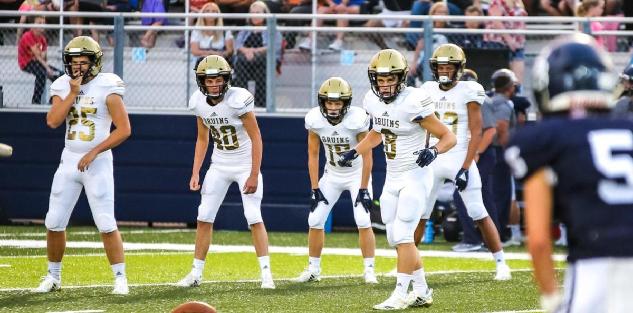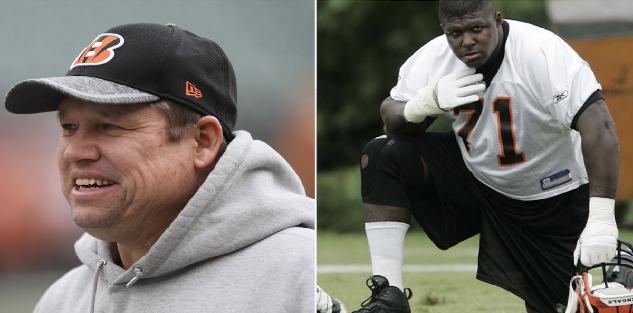Featured courses
- Jim Thorpe Award Winner Jahdae Barron’s 4 Drills for Dominating Receivers by Grant Young
- 5 Tips to Improve Your Football Game Plan by Andrew Dohre
- Game Changer RPO Football : Wing-T Offense by Andrew Dohre
- Mastering the Pass Rush: Expert Drills and Progression Tips from UCLA’s Coach Ikaika Malloe by Andrew Dohre
- 3 SPO’s to Protect the Passing Game and create opportunities in space by Keith Grabowski
- The Art of Running the Corner Route- Coaches and Players Prespectives by CoachTube Staff
- Evolve your Defense with Quarter, Quarter Half to Stop RPO by Coach Grabowski
- Top 10 College Football Players to Watch for in 2022 by Alec Burris
- Clemson vs. Syracuse Matchup of the Week by Keith Grabowski
- Sprint Out Passing: Move the Pocket for Success by Keith Grabowski
- Unlocking the True Potential of Your Special Teams Play by Keith Grabowski
- The Most Important Components of Air Raid by Keith Grabowski
- 4 Plays that Benefit from Bunch Formations by Keith Grabowski
- 3 Third Level RPOs for Explosive Plays by Keith Grabowski
- The Role of the Screen Game in Explosive Offense by Keith Grabowski
- The Chess Match: Win on the Perimeter (Part 1) by Coach Grabowski
- Unlocking the Power of Gap Manipulation to Limit Explosive Plays by Keith Grabowski
- TCU’s 3-3-5 and facing bigger personnel by Keith Grabowski
- Elevating Your Team: Strategies from Coach Matt Ruhle by Keith Grabowski
- 7 RPO’s for your playbook by Coach Keith
- Beyond Quarters - The Need For Additional Coverage Concepts by Keith Grabowski
- 5 Core Offensive Priniciples for a Winning Football Formula by Keith Grabowski
- Win Downfield - Attacking Different Areas Deep with 3rd Level RPO by Coach Grabowski
- WAKE FOREST’S UNIQUE RPO GAME by Keith Grabowski
- Adjustments to Defeat the Tite Front by Keith Grabowski
- Attack Defenses with The Versatile Y-Cross Concept by Keith Grabowski
- Play Action is a Cheat Code! - 5 Play Action Concepts to Increase Your Expected Points by Keith Grabowski
- Question from Rutgers OC - What does your offense say about your coaching? by Keith Grabowski
- Gap Schemes vs. Tight Fronts, Play Action Shots and Misdirection by Coach Grabowski
- Setting up your young Qb for success by Keith Grabowski
- The Hot Gap plus 3 Gap Scheme RPO’s to Stress the Defense by Keith Grabowski
- How Football Coaches Can Build A Game-Changing Special Teams Unit by Grant Young
- Master the Art of Quick Passing for High Completion Percentages by Keith Grabowski
- How to Be an Influential Football Coach by Grant Young
- How to Maximize Tackling Efficiency within Scheme by Keith Grabowski
- Offensive Drills of the Week by Keith Grabowski
- How a Stoplight Can Make Your Fly Sweep Takeoff by Keith Grabowski
- Keep your Drills Fresh and Your Skills Developing - Offense by Keith Grabowski
- Coach Kevin Kelley, Outside The Box by Keith Grabowski
- Want your defense to get off the field after third down? Sims and Creepers are the answer! by Keith Grabowski
- Create More Turnovers with Circuit Training & Win More Games! by Keith Grabowski
- Devastate the Defense with TE RPOs by Keith Grabowski
- Red Zone adjustments by Keith Grabowski
- CoachesClinic.com Featured Matchup: Cincinnati vs Indiana by Caleb Hopkins
- 3 NFL ZONE RUN PLAYS FROM WEEK 7 by Alex Kirby
- Sonny Dykes Teaches You How to Put Together an Offense by Coach Grabowski
- FIVE REASONS TO RUN THE 3-3 DEFENSE by Alex Kirby
- Getting Your Defense Ahead - 1st and 2nd down Pressures from Noah Joseph by John Grayson
- Chad Morris Teaches How To Builds an Offense by Coach Grabowski
- Get Your Offense a +1 With the QB Run Game by Coach Grabowski
- Are You Causing a 14 Point Turnaround...Against Your Team? by Coach Grabowski
- Learn How to Improve Your Offense with USC’s “Harrell Effect” by Coach Grabowski
- The Power of Influence - Rick Jones, Mizzou by Coach Grabowski
- Easy QB Runs to Drive Defenses Crazy by Ryan Eisenberger
- How many different ways can you make the defense cover everyone? by Ryan Eigenberger
- Win Passing Downs with Creepers and Sims by Coach Grabowski
- Always have a plan to play your best 11 by Keith Grabowski
- Dominate the Defense with Double Teams by Coach Grabowski
- Buffalo OC teaches his model for game planning by Keith Grabowski
- Put your 3 Deep Coverage in a Better Position with Zone Alert Rotations by Coach Grabowski
- 5 Keys to Using Trick Plays by Coach Grabowski
- Learn from 'Juggernaut' Offense by Keith Grabowski
- Bob Wylie - Offensive Line Breakdowns by Coach Grabowski
- Utilizing the Hybrid Linebacker to take away Offensive Advantages by Coach Grabowski
- Always have a plan to play your best 11 by Keith Grabowski
- Coachesclinic.com Featured Matchup: #6 Oklahoma vs #21 Texas by Caleb Hopkins
- Easy for You - Difficult for Them Adjustments by Keith Grabowski
- Coachesclinic.com Featured Matchup: Davidson College vs Presbyterian by Caleb Hopkins
- Week 5 National High School Football Rankings by Keith Grabowski
- Protecting Aaron Rodgers (and your own QB) by Caleb Hopkins
- Defensive Drills of the Week by Keith Grabowski
- Woo Pig - Add a wrinkle with these Arkansas Downhill Run Variations by Keith Grabowski
- Coachesclinic.com Featured Matchup: #7 Cincinnati vs #9 Notre Dame by Caleb Hopkins
- Offensive Drills of the Week by Keith Grabowski
- Coach Jason McEndoo Teaches #12 Oklahoma State’s Top Running Play by Keith Grabowski
- Adjustments - Attach Screens to your best plays, defend star receivers, & movement to stop the run by Keith Grabowski
- Coachesclinic.com Featured Matchup: Army vs #16 Wake Forest by Caleb Hopkins
- How To Implement A Running-Back-By-Committee Scheme by Brandon Ogle
- How To Become The Most Feared Offensive Lineman In Your League by Chrisian Benavides
- Wylie, McNally and Alexander Key Coaching Points on the Wide Zone Play by Keith Grabowski
- #21 Coastal Carolina’s play that is a whole offense within itself by Keith Grabowski
- 4 Plays that Benefit from Bunch Formations by Keith Grabowski
- Best Mesh Concept Plays by Ron McKie
- Forming Families For Football by Darryl Page
- Top 5 Things Coaches Should Strive To Get Out Of Spring Camp by Darryl Page
- 10 Tips To Know Before Attending Football Camps by James Breland
- Offensive Line Drills by Rick Bouch
- You’re a captain, now what? 5 Tips to bring your team together and establish yourself as a true leader by Lester Crafton
- COACHING THE 4-2-5 DEFENSE VS SPREAD TEAMS by Alex Kirby
- Gifts From Grinch by Coach Grabowski
- A Package to Help You Win Mid to Late Season by Coach Grabowski
- The Future of American Football: How to Run the Spread Offense by Coach Scott
- Chris Ash teaches Longhorn Tackling by Coach Grabowski
- The misunderstood Yet Powerful Run Scheme - Duo by Coach Keith
- THE GUS MALZAHN QUARTERBACK COUNTER PLAY by Alex Kirby
- FIVE TIPS FROM GUS MALZAHN ON HOW TO BUILD YOUR PLAYBOOK by Alex Kirby
- LITTLEST KID ON THE FIELD TRUCKS LINEMAN – YOU CAN’T MAKE THIS STUFF UP by Jacob
- HOW TO MAXIMIZE YOUR OFFSEASON FOOTBALL TRAINING by Dominic
- BAD CALL, GREAT COACH: THIS IS WHY PLAYERS LOVE PETE CARROLL by Jacob
- How to Get Recruited for Collegiate Sports by Brandon Ogle

How To Implement A Running-Back-By-Committee Scheme
- By Brandon Ogle
In recent years, football has seen an uptick in the awareness of injuries. Football is a difficult game and one that can quickly take a physical toll on players.
This isn’t just at the professional level. Coaches at all levels should be implementing game plans that are designed to protect the safety of all players. In reality, unless you’re a punter or kicker, you are susceptible to the taxing nature of football.
In this article, I’ll break down how a running back by committee scheme can lighten the load at one of the most difficult positions in football.
Bell-Cow BackBack
The term “bell-cow” is actually most often used in fantasy football circles, but it can be transferred over to actual football matters. In short, a bell-cow back is someone that handles all of the carries.
Obviously, in a committee, this guy won’t be a literal bell-cow as he’ll be splitting carries, but each team needs a guy at the top of the depth chart. Rather than handling the normal three downs, a bell-cow in a committee will take first and second downs.
For this spot, the priority is finding a consistent back who doesn’t fumble and is able to run between the tackles. While hands and big-play ability can help, they are not nearly as important as the capability to pick up tough yards in the trenches.
In terms of current bell-cows, the best professional example has to be DeMarco Murray during his past season with the Dallas Cowboys.
Scatbackback
Scatbacks are the smaller backs who possess superior speed and elusiveness.
They may not have the strength of the bell-cow, but what they do have is the ability to make big-time football plays.
Scatbacks are capable of serving in pass protection, as well as being yet another option in the passing game for the quarterback. While the bell-cow is going to traditionally run between the tackles, the scatback will take his carries outside the hashes. Their elusiveness allows them to consistently make tacklers miss in the open field.
Finally, scatbacks can also provide value on special teams to justify their spot on the roster. A perfect NFL example is Darren Sproles. Sproles has carved out a steady NFL career for his exceptional work on third-downs, in the passing game, and as a kick returner on special teams.
Goal-Line BackBack
The final type of back a coach can add to his committee is a goal-line back, which in most cases will simply be your full-back. The goal-line back can be thought of as a short-yardage specialist. His primary playing time will come on 3rd or 4th and short when the offense finds itself inside the five yard line.
The two most important qualities a goal-line back can have are massive strength, to avoid getting stopped on these short-yardage situations, and a sure-hand grip that never fumbles. A miscue by the goal-line back usually takes points off the board, so you want someone with reliable consistency.
Many players have held this role in recent years, including Mike Tolbert. Even though Tolbert was able to handle additional carries, his primary value came in his ability to convert short-yardage situations and put points on the board.
Minimizing Injury Risk For Your Playersyers
Running backs are inherently injury prone due to the nature of their football position. Handling 20 carries a game puts a significant toll on the body. Furthermore, expecting that same player to assist in pass protection and add a few more touches in the passing game is difficult. There’s no way of getting around the fact that injuries are a definite possibility.
Meanwhile, you can’t abandon the run game completely as a passing-dominant team is easy to plan for. It allows the opposing coach to add in more defensive backs and makes your offense one-dimensional.
The only way to overcome this massive injury risk associated with ball-carriers is to implement a committee scheme. It spreads out the touches amongst three or more players and prevents one player from taking all the punishment. It also allows you to utilize a wider number of strengths on your roster.
Maximizing Yards-Per-Carry For Your TeamTeam
YPC stands for yards per carry. It is a key barometer of success in football. While a significant deal of the YPC depends on the ability of an offensive line to open up holes, much depends on the running back’s ability to exploit openings and achieve big gains.
A player may be in top-notch physical condition, but if he is nicked up and has been carrying the rock for three quarters, isn’t it fair to say that he may be a little fatigued by the fourth? To combat this and achieve a higher YPC, the committee will keep players fresher.
The San Diego Chargers experimented with a committee back in 2011 that featured Ryan Mathews and Mike Tolbert. The duo combined for 1,582 rushing yards, 888 receiving yards, and 16 touchdowns. It is highly unlikely either of these two would have been able to put up those numbers on their own. However, a committee made it doable because they were able to maintain a steady YPC that encouraged the coach to put his faith in the running game.
Personnel Decisionsions
Before making any changes to one’s offensive or defensive game plan, coaches must have a clear understanding of their personnel.
In terms of committee, it’s going to be different for each team. If a team doesn’t have an elite, sturdy back that can handle a full load of carries, a committee is going to make sense. Conversely, if a team has an Adrian Peterson, then a true committee scheme makes no sense.
Certain players possess the durability to handle a full load and the type of talent that makes them difficult to remove from the field. In a similar fashion, if a team operates on a heavy passing attack, it might make sense to keep the scatback out there for some early downs to add another weapon. It all depends on the horses you have in your stable.
And be sure to run your stable of backs through these running back drills.
Successful Running Back By Committee Examplesples
As I previously mentioned, running back committees are becoming more and more common at all levels of football, largely due to the fact that awareness of injuries is finally coming to the forefront. Here are some successful examples that demonstrate what’s possible.
2014 New York Jets – While the 2014 season was a disaster for the Jets’ offense, I do believe they found some success when they implemented a committee. Despite playing behind an abysmal quarterback performance this year (though I don’t blame this entirely on Geno Smith), the duo of Chris Ivory and Chris Johnson managed to amass nearly 1,500 yards and 7 touchdowns, with both averaging over 4 yards per carry. These two guys complemented each other perfectly with Ivory’s tough between-the-tackles running style and Johnson’s home-run ability.
2014 Alabama Crimson Tide – On a college scale, you can never go wrong with an Alabama example. Here, offensive coordinator Lane Kiffin designed a committee that featured a powerful between-the-tackles runner in Derrick Henry and a jack-of-all-trades in T.J. Yeldon. Obviously, it helps to have the talent level of these two guys, but I believe the way Kiffin utilized their individual talents allowed them to flourish. Henry finished with 990 yards (5.8 YPC) and 11 touchdowns, while Yeldon racked up 979 yards (5.0 YPC) and 11 touchdowns.
Final TakeTake
Some of the old-school football people may disagree with a committee scheme, but I believe it is the only way to ensure longevity for running backs, maximizing their career potential and preserving their health for life after football.
At any level, whether you're coaching high school kids or a youth football team, coaches need to do their best to protect players from serious injuries. Along with some of the protective equipment that has been hitting the market, I believe a committee scheme is one of the best possible tactical adjustments to lessen the risk of injury for your running backs while simultaneously maximizing their benefit to your team on the field.










